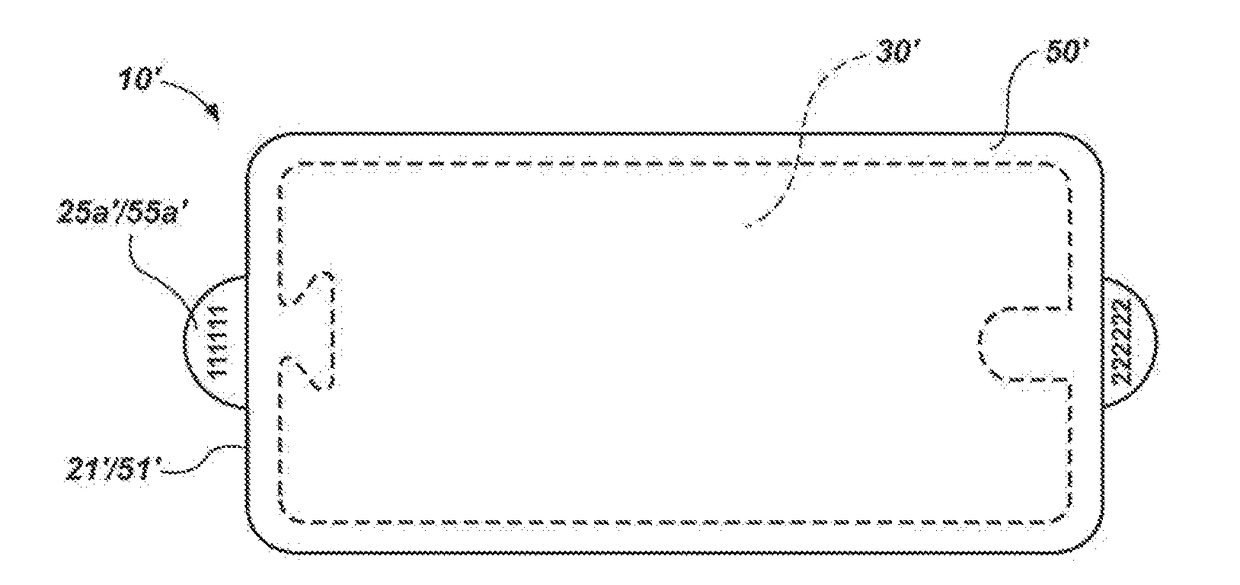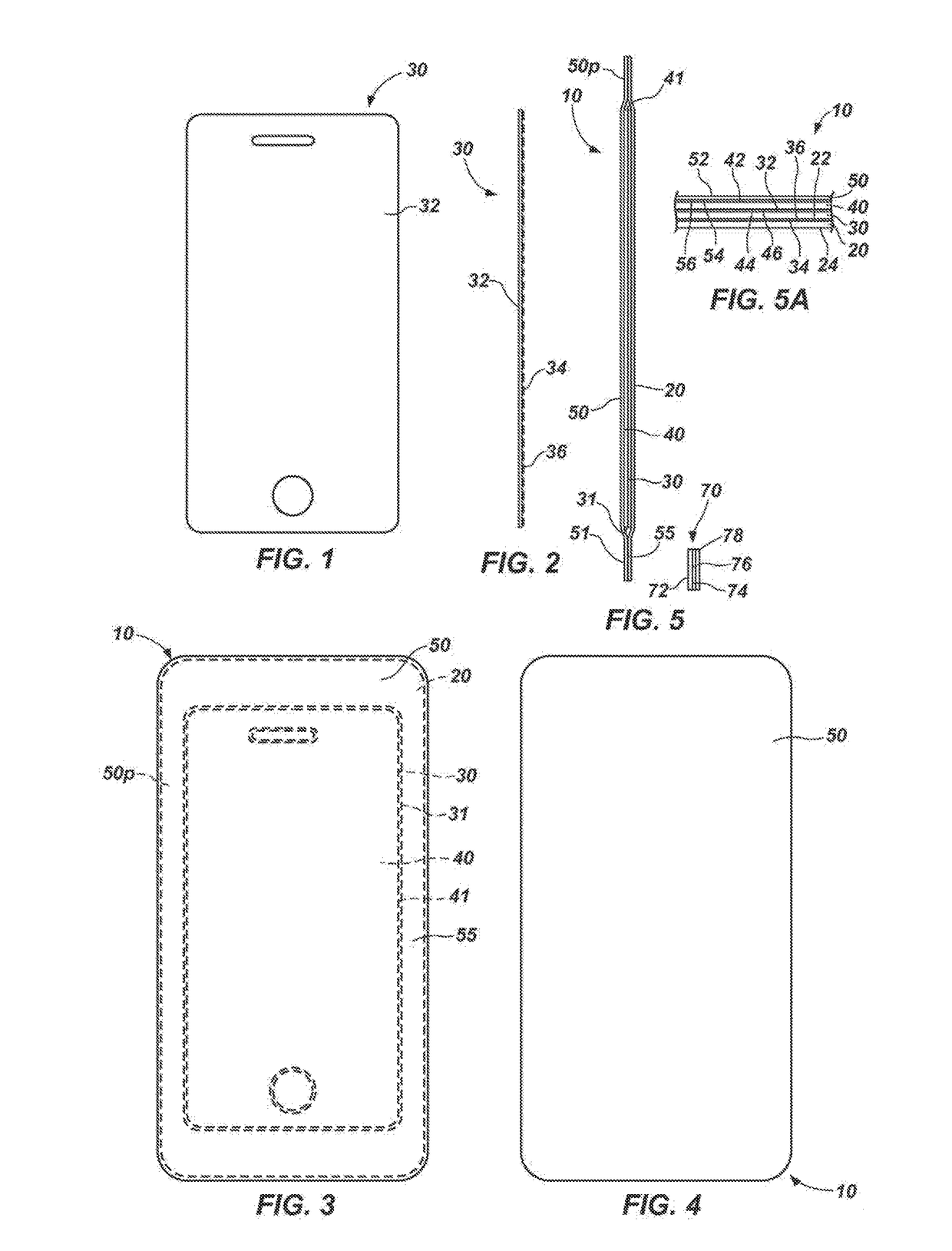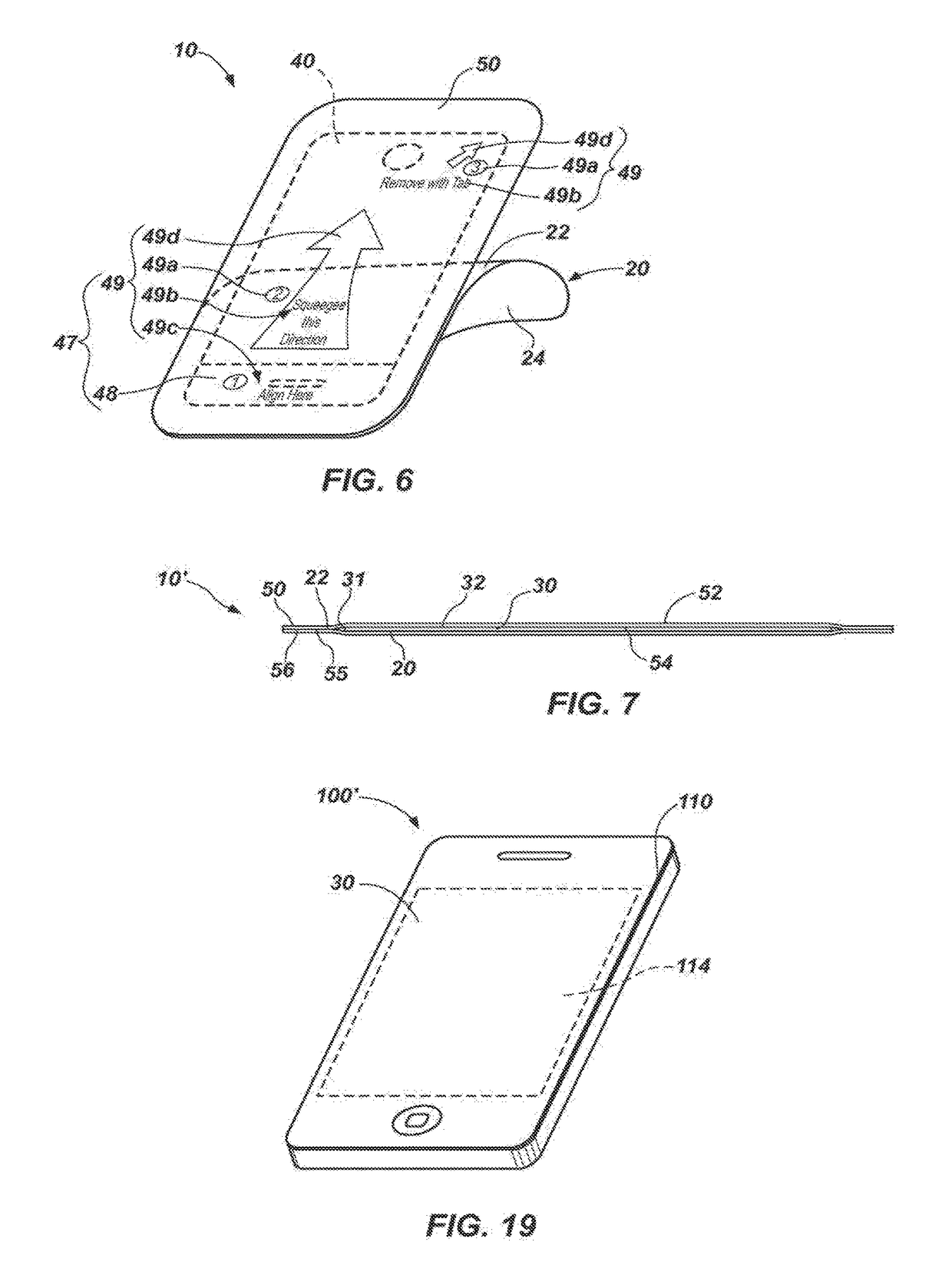Dry apply protective systems
a protective film and dry application technology, applied in the field of protective systems and protective films, can solve the problems of difficult, sometimes impossible, difficult, and sometimes impossible, to remove visible air bubbles from between a conventional dry application protective film and the protected surface, and achieve the effects of less flexible, more rigid, and easy separation and removal
- Summary
- Abstract
- Description
- Claims
- Application Information
AI Technical Summary
Benefits of technology
Problems solved by technology
Method used
Image
Examples
Embodiment Construction
[0045]FIGS. 1 and 2 illustrate an embodiment of a dry-apply protective film 30. The dry-apply protective film 30 is also referred to herein as a “protective film” for the sake of simplicity. The protective film 30 includes a substantially planar member with an exterior surface 32 and an opposite adherent surface 34, which is configured to be secured to a surface of a substrate (e.g., an electronic device, etc.). The adherent surface 34 carries an adhesive material 36, which enables the protective film 30 to be secured to the surface of the substrate by a so-called “dry-apply” process, which does not require the use of any “wet” chemicals.
[0046]The protective film 30 may be transparent, translucent, or opaque. The exterior surface 32 of the protective film 30 may be configured with a finish that appears (to the so-called “naked eye”, without image enhancement, etc.) to be smooth (e.g., glossy, etc.), to have a matte finish, or to have any other desired texture. The exterior surface 3...
PUM
| Property | Measurement | Unit |
|---|---|---|
| angles | aaaaa | aaaaa |
| contrast | aaaaa | aaaaa |
| pressure sensitive | aaaaa | aaaaa |
Abstract
Description
Claims
Application Information
 Login to View More
Login to View More - R&D
- Intellectual Property
- Life Sciences
- Materials
- Tech Scout
- Unparalleled Data Quality
- Higher Quality Content
- 60% Fewer Hallucinations
Browse by: Latest US Patents, China's latest patents, Technical Efficacy Thesaurus, Application Domain, Technology Topic, Popular Technical Reports.
© 2025 PatSnap. All rights reserved.Legal|Privacy policy|Modern Slavery Act Transparency Statement|Sitemap|About US| Contact US: help@patsnap.com



